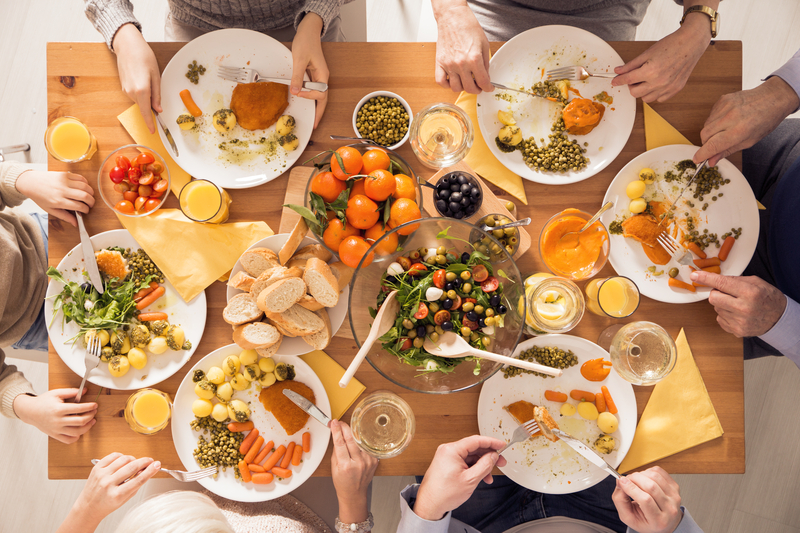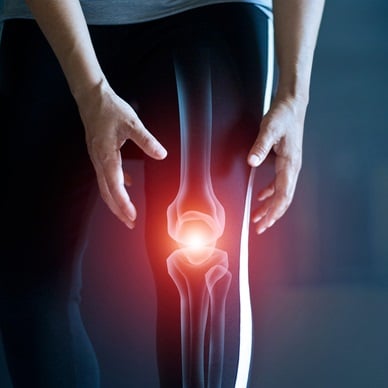10 Weight-Loss Secrets from Around the Globe

In North America, as a culture, many have embraced a “bigger is better” mentality. We’ve got bigger homes, bigger cars, bigger retailers, bigger refrigerators, bigger portion sizes, bigger, well, everything. For just one example, in 1955, McDonald’s served a Coke in seven-ounce cups. Now, you can Super-Size your soda to 30 oz.
A restaurant meal is now 4 times bigger than what you would get in the 1950s. It’s not just restaurant meals either. Chickens have been supersized—in 1957, the average chicken was about 905 grams at 56 days old. As of 2005, that chicken reached 4,202 grams at the same age.
All these big changes have resulted in bigger bodies. Obesity has increased from 23% of the population to over 31% in recent years. And a good 66% of adults are overweight.
Unfortunately, many popular food companies have been hard at work to not only market these big changes here in the Americas, they’ve also been exporting this big problem to much of the world over the last 30 years.
While there are many great things from the Americas that are well worth sharing, when it comes to creating a healthier lifestyle, it may be time to reverse direction and start importing some of the best weight-loss tips from abroad.
Top 10 Weight Loss Tips from Around the World
Much of the world has also been experiencing increasing weight gain, yet traditionally, there are some simple lifestyle choices that have helped folks from these countries eat well and stay healthy and happy. Here are some of our favorites:
Tip #1: Enjoy Heart-Healthy Foods Like Italy
Virtually everyone has heard of the benefits of The Mediterranean Diet. Less of a “diet” and more of a lifestyle, this Italian-inspired plan provides plenty of nutrient-rich vegetables, fruits, whole grains, and fresh fish and seafood, and is known to promote heart health, decrease the risk of certain cancers, support healthy, sustainable weight loss, and potentially promote a longer life and health span.
The Mediterranean diet also encourages a more active lifestyle with plenty of walking as well as limiting snacking and stress eating. It also encourages people to connect over a meal, enjoy larger meals earlier in the day (and smaller meals in the evening), and focus on fresh, minimally processed foods. The entire lifestyle promotes a healthier relationship with food. Plus, a small glass of wine with dinner is included.
Tip #2: Turn Up the Heat Like Thailand
This country’s cuisine is well-known for bringing the heat by adding spicy chili peppers to meals. In fact, Thai food is one of the spiciest cuisines in the world. In addition to adding lots of flavor, the capsaicin found in chilis has been shown to help suppress appetite and increase calorie burn via thermogenesis.
When food is spicy, it also helps you slow down and eat more mindfully. In North America, it’s common to eat quickly between tasks, which doesn’t allow your body to register when it’s full. That can easily lead to overeating. Adding a bit more spice to your meals is an easy way to help you naturally slow down and really enjoy your food without consuming too much.
Tip #3: Upgrade Your Sides Like Brazil
In addition to its stunning beaches, diverse cities, and popular sports figures, Brazil is known for its delicious food and rich coffee. One dish that’s included almost daily is rice and beans. This foundation of meals is high in fiber, energy-boosting complex carbs, and plenty of nutrients, including antioxidants. These foods can help support healthy weight by providing filling fiber while helping stabilize blood sugar levels. That means they keep you feeling full for longer.
Beans and rice also form a complete protein when combined. Research suggests that making beans and rice a foundation of your diet can help decrease the risk of obesity by up to 14%. What’s more, consuming beans regularly has been shown to help promote healthy cholesterol levels and may even reduce the risk of cancer.
Tip #4: Find Time to Fast Like Indonesia
Periodic fasting is widely practiced worldwide for religious reasons. For instance, in Islam, the leading religion in Indonesia, periodic fasting from dawn to dusk is quite common. Another practice in Indonesia allows only water and white rice during certain times.
While fasting isn’t right for everyone, some people find that it helps promote more mindful eating. It can also help to learn what it really means to feel hungry. Many Americans never really get hungry as they eat every few hours, so they’re still digesting their last meal when it’s time to eat again. Or, they mistake hunger for thirst. Taking a break from eating or cutting calories by about 50% for a day may help you better get in touch with true hunger cues.
That said, fasting isn’t recommended for anyone with a history of eating disorders, children, pregnant or breastfeeding moms, or folks with blood sugar issues.
Tip #5: Fill Up on Fish Like the Netherlands
Did you know the Dutch eat nearly 85 million herring per year? The fish are often served pickled and eaten straight-up as a snack or on a sandwich with pickles and onions. Because herring is an oily fish, it provides plenty of healthy omega-3 fatty acids, which can help support heart health and lower cortisol levels and may help you better avoid fat accumulation around the belly.
If you don’t find pickled herring in your grocery store, another great option is canned sardines. Both options are lower in calories than a typical burger and even more filling as they’re high in protein and good fats.
Another great habit to import from the Netherlands has to do with transportation. Activity levels have a lot to do with not just your weight but with overall health. And the way you get around can make a big difference. In the Netherlands, one of the preferred means of transportation as well as entertainment is via bikes. Bikes actually outnumber people in the Netherlands, and 40% of the Dutch commute on bike.
Daily bike rides can lead to an increased calorie burn of up to 2,500 calories over a week, which can help fend off weight gain.
Tip #6: Go on Epic Hikes Like Finland
One of our favorite ways to be more active is to hike. In Finland, a popular pastime is Nordic hiking. All you need are some lightweight hiking poles. These help you keep your balance on rocky or slippery terrain while helping you burn more calories as they work more body parts by activating your upper body and torso along with your lower body. In fact, this type of hiking can increase the calorie burn by up to 20% over traditional hiking. It’s fun no matter the weather and a great way to get out into nature for mental and physical benefits.
Tip #7: Find Time for Family Meals Like France
How many of us eat on the go (or in front of the TV)? In France, 92% of families sit down to eat dinner together every night. That’s compared to a mere 28% of American families. The French understand that dinnertime is an important event, while Americans often see it as something you squeeze in between events.
By taking this cue from the French, we can better connect with our loved ones. What’s more, longer meals encourage more conversation. And more talking means less eating. Plus, it’s easier to notice when you’re actually full, so you can stop before you’re stuffed.
If you can’t remember the last time you sat down for a family meal (the last holiday?) and your dining table is more of a stuff collector than a place to serve meals, start small by inviting your family or friends to join you for just one meal. What a fantastic opportunity to reconnect in the midst of your busy lives!
Tip #8: Nestle into Naptime like Japan
There’s no denying the connection between good sleep habits and a healthy weight (and many other health benefits). But sometimes it can be difficult to get in the quality sleep you need every night. Enter the power nap. In Japan, it’s common for people to take 20 to 30 minutes to catch some ZZZs during the day. In return, your body can better regulate hunger hormones, so you eat when you’re hungry rather than because you’re tired.
This isn’t the only positive habit for maintaining weight that we can import from this island country. Particularly from the region of Okinawa is a philosophy called Hara Hachi Bu, which basically means stopping a meal when you’re only 80% full. This gives your body time to register you’ve eaten enough (before eating too much), as it takes up to 20 minutes for the brain to catch up to the stomach, so you eat fewer calories.
Tip #9: Rev Up Your Metabolism with Rooibos Tea Like South Africa
Rooibos, or red tea, is an herbal tea made from the leaves of the Aspalathus linearis shrub. It’s grown on the Western Coast of South Africa and can be made into iced tea, hot tea, or used in espressos. It’s been found to help support weight loss by helping promote fat metabolism while decreasing stress hormones that can lead to increased hunger and boost fat storage. It may also support healthy cholesterol levels.
Rooibos is also naturally sweet and has a more robust flavor than green tea. If you make the switch from your average afternoon coffee with added cream and sugar, over a month, you could save yourself thousands of calories, potentially leading to real weight loss of over 10 pounds per year.
Tip #10: Make a Healthy Lifestyle Part of Your Identity like Sweden
One country that’s well-known for maintaining a healthy weight, even as countries around it are beginning to expand, is Sweden. That’s despite the Swede’s often-decadent daily coffee with a sweet treat with friends (known as Fika). One big reason for this is their culture, which promotes healthy eating and a more active lifestyle.
For comparison, when you walk into American grocery stores, the first foods you’ll typically find are tempting ultra-processed, convenient foods that are loaded with excess calories. In Sweden, on the other hand, most grocery stores open up to the produce section, followed by the bread aisle. The whole-grain, high-fiber breads are placed at eye level. White breads are still available, but they’re typically relegated to the bottom shelves. Regular high-sugar sodas are also available, but you’ll find just as many or even more non-calorie sparking water drinks or rehydrating sports drinks. Healthy food is also more affordable in Sweden than in many other parts of the world.
Communal meals and fun sports activities are also a big part of the culture, beginning at a very young age and continuing throughout life. And because Sweden is a smaller country, it’s also more walkable and bikeable. You don’t need to jump in a car for every errand, so it’s easier to be more active just as part of everyday life.
In almost all cases, we can’t change how our grocery stores are arranged or find an affordable home with easy walkable or drivable places to work, eat, and recreate. But we may be able to take small steps to transform our personal culture, lifestyle, and even identity to naturally make healthier choices, beginning in our own homes.
Weight-Loss Tips to Import from Around the World
If you look at Instagram feeds, YouTube reels, and comments on message boards, you’ll likely come away with the impression that Americans are obsessed with weight loss. People post about their meal prep, simple ways to cut calories, mindful fitness and nutrition routines, and how being fit is beyond cool. As mentioned above, though, collectively, Americans carry a lot of body fat and are suffering the health consequences.
Of course, we aren’t alone, and many countries are keeping up and have even surpassed the Americas in weight gain. Globally, there are more than a billion overweight people and over 600 million are considered obese.
Fortunately, there’s a lot we can learn from countries around the world (as well as in some regions in our own country) to help us embrace a healthier lifestyle, and the list above is only the beginning of places to explore.






 US Doctor: "Eating This Every Day Can Snap You Into Ketosis"
US Doctor: "Eating This Every Day Can Snap You Into Ketosis" 3 Key Nutrients to Help Lubricate Your "Tin Man" Joints
3 Key Nutrients to Help Lubricate Your "Tin Man" Joints AVOID Plant-Based Protein Powders (unless...)
AVOID Plant-Based Protein Powders (unless...)

